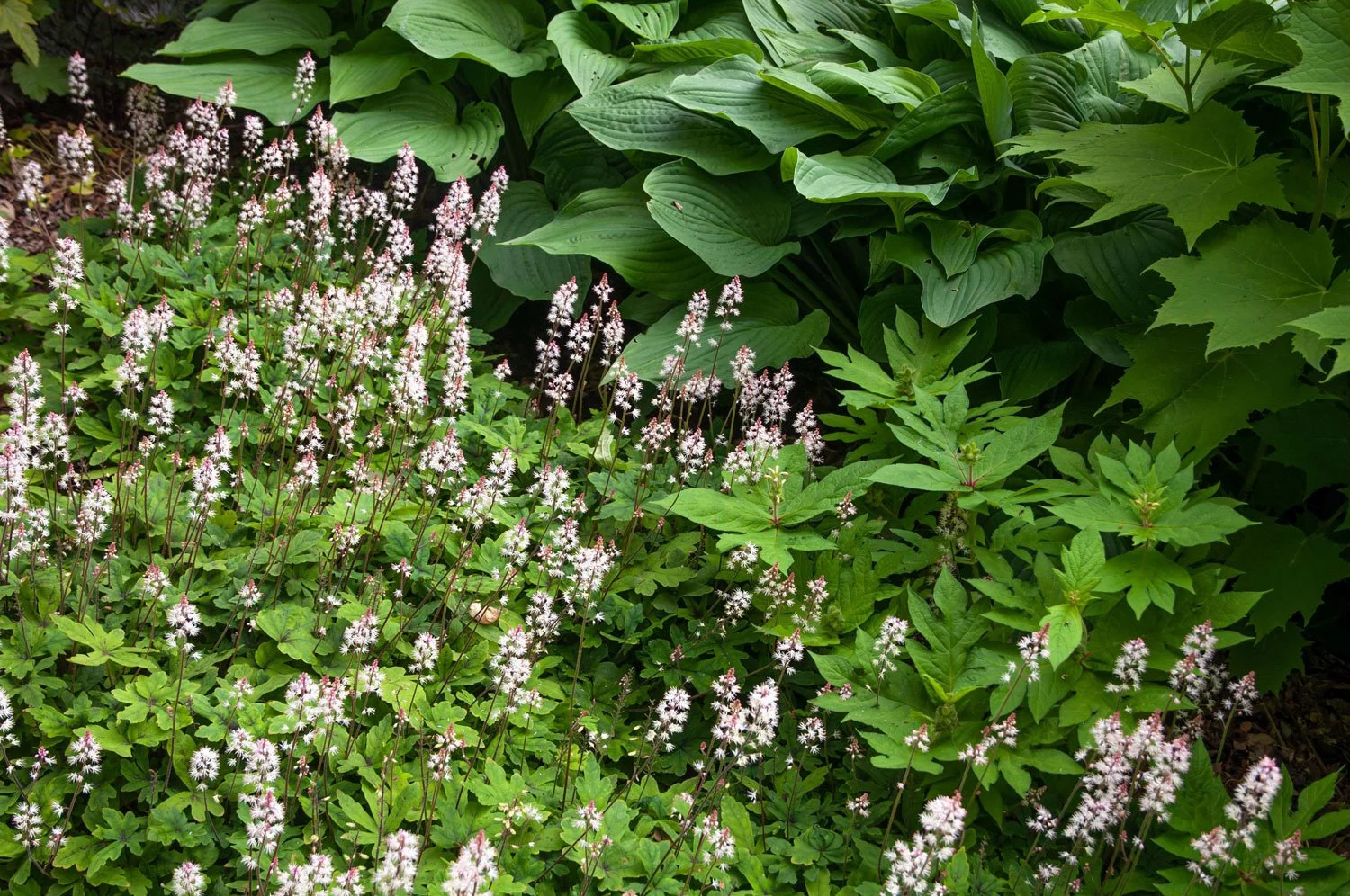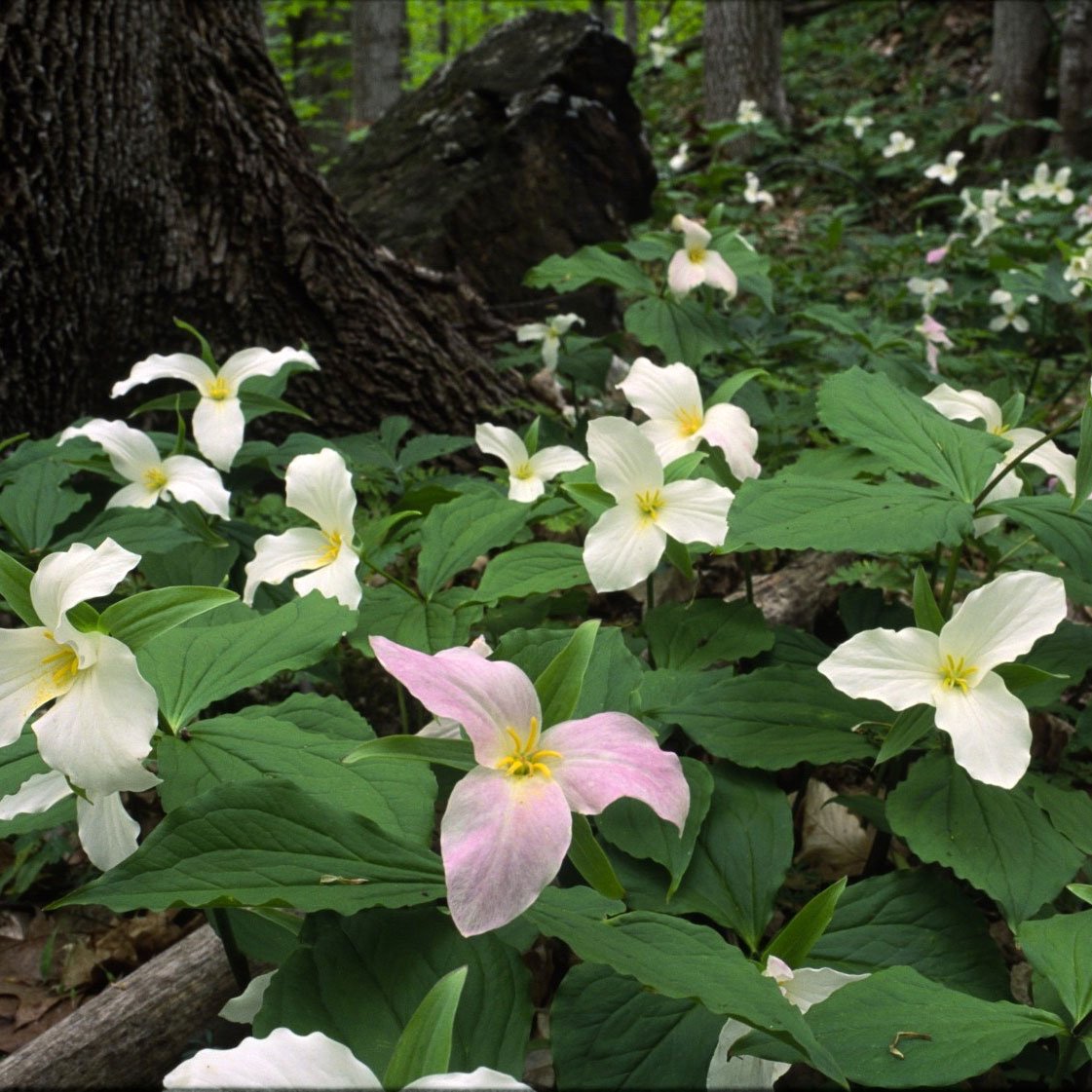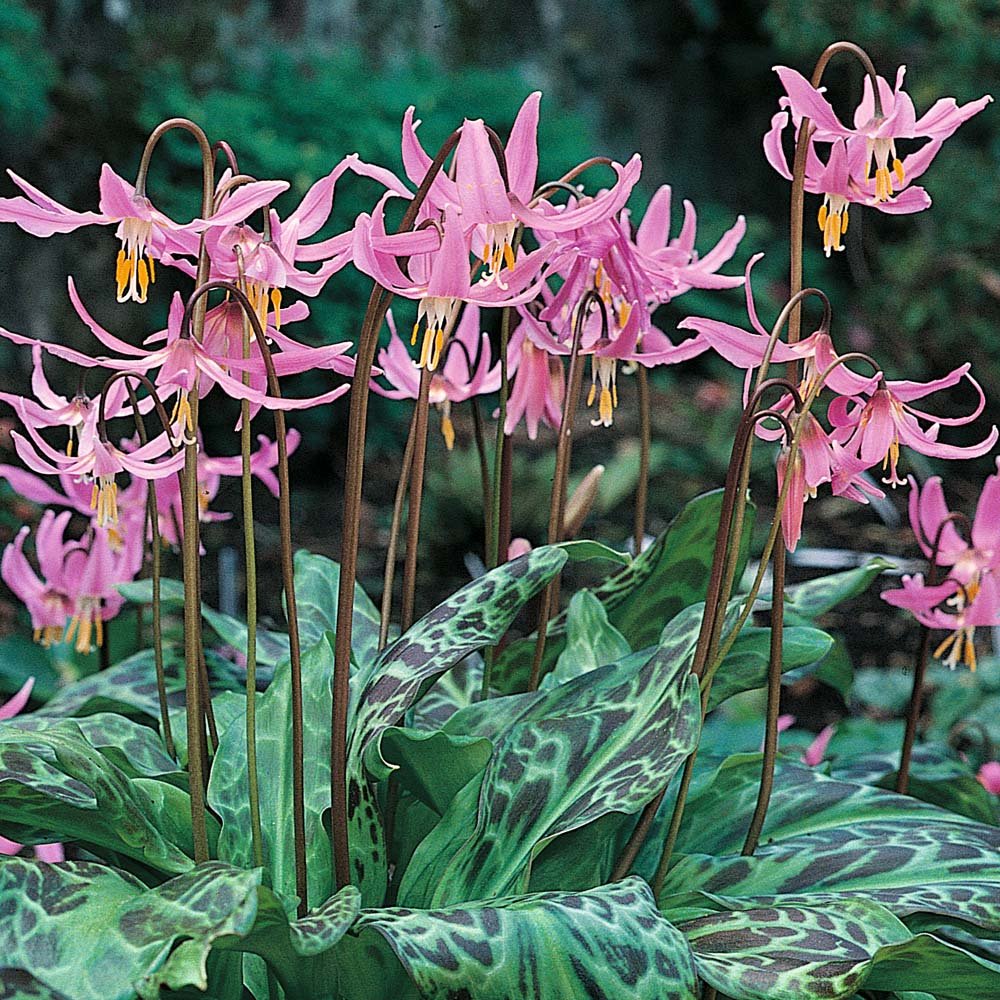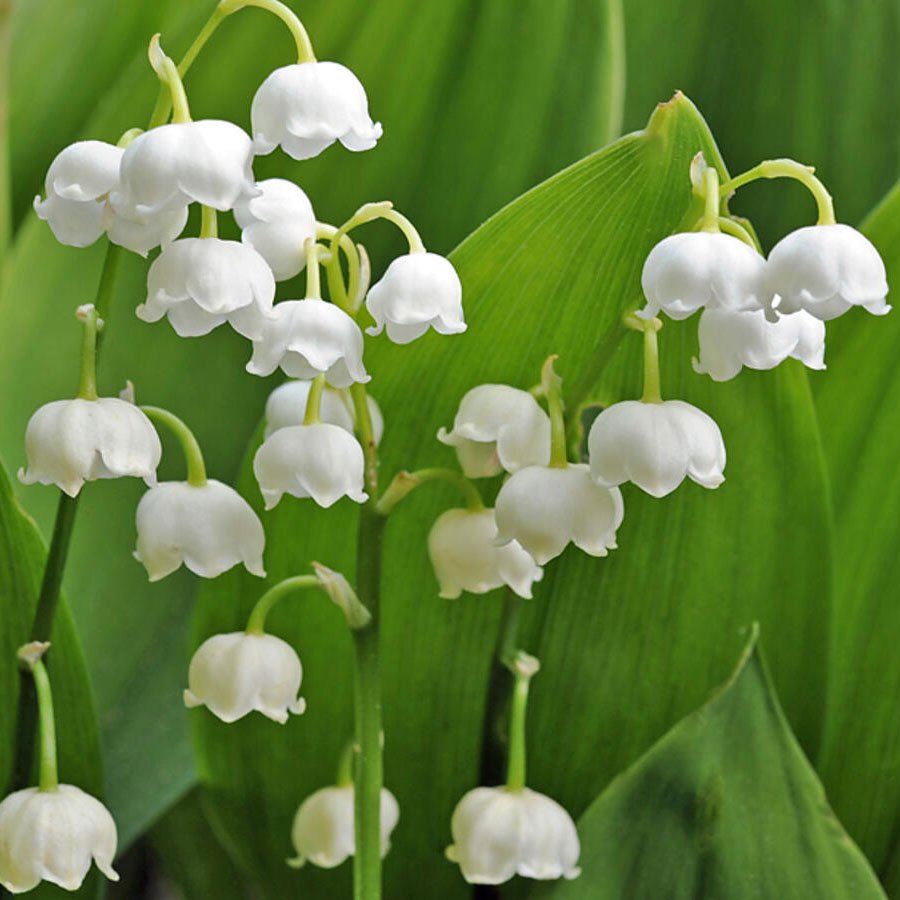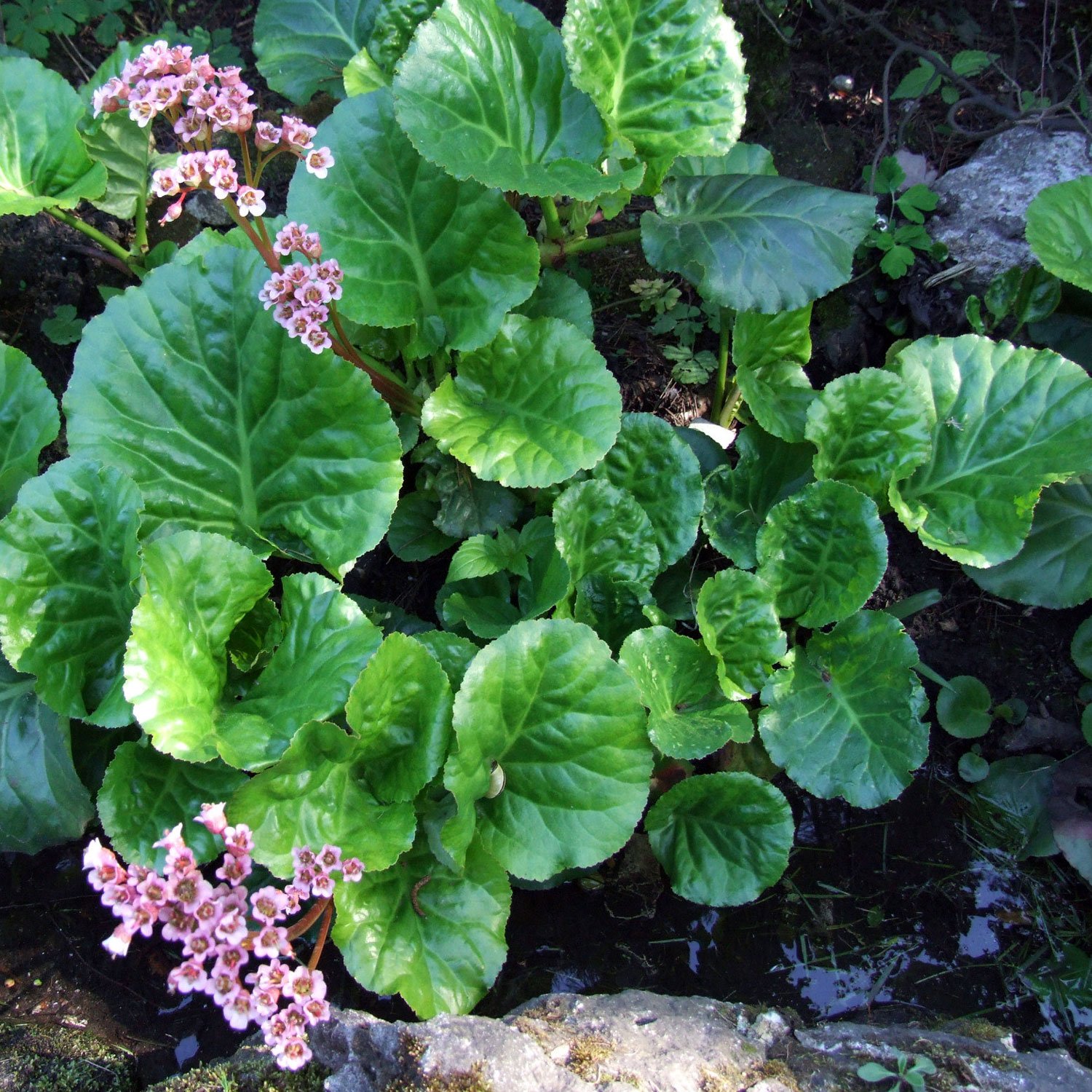When you imagine a shade garden, do you mostly picture foliage plants and a lack of bright colors? While foliage plants are the foundation of any shade garden, there is an abundance of flowers that offer beautiful blooms in shady conditions!
Defining Shade
When choosing flowers, it’s important to know which type of shade you are working with. There are a few different shade levels we talk about when determining the care requirements and placement of plants.
Partial Shade (also called Partial Sun) is an area that receives about 4-6 hours of direct sun per day. Plants that prefer partial shade like the morning sun but should be protected from intense afternoon sun.
Dappled Shade - this can be a type of partial shade in which sunlight trickles down through the leaves of overhead trees most of the day or it can be considered full shade if the light trickles down for only 2-4 hours each day.
Full Shade is an area that receives less than 4 hours of direct sunlight per day but is not entirely without sunlight.
Deep Shade is an area that receives little or no direct sunlight. For example, it may be along a north wall and under a tree or deck, obscuring even ambient light from the sky. Most plants will not grow in deep shade.
Knowing these definitions is a good start to understanding plant tags and choosing the best flowers for your shady spot. If you’d like more in-depth information about shade, check out our blog post, “Fifty Shades of… Well, Shade.”
15 Flowers for Shade
These flowers thrive in shady conditions and have bloomed well in my PNW garden. I’ve loosely arranged them by bloom time so you can plan to have flowers throughout the year. All flowers in this post grow well in Partial Shade to Full Shade. This means they also grow well in Dappled Shade, whether it is part or full.
Note: Availability may vary. Ask us for alternatives!
Hellebore
One of the earliest perennial flowers, hellebores bloom November- April, depending on the variety. Winter bloomers are often called the Christmas Rose while those that bloom February-April take the name Lenten Rose. The large, nodding flowers last for a long time and age well on the plant. Flower colors include white, burgundy, mauve, peachy-pink, and even yellow. Prominent pistils and stamens add interest as well. Hellebores prefer rich, well-draining soil. They will flower best with at least 4-5 hours of sun (even dappled) per day but will grow in shade as well. Learn more about Hellebores.
Trillium
A woodland wildflower, trilliums are slow to establish but worth the wait as they spread to form a gorgeous flowering groundcover for shade. The three-petaled flowers of our native species appear white in spring and slowly fade to pink as they age. Other varieties may have yellow or maroon flowers. Their genus name, Trillium, comes from the fact that most parts of the plant appear in threes, including the petals, leaves, and even the three-sectioned seedpods!
Erythronium
The delicate, nodding flowers of Erythronium always remind me of magical fairy caps and are best viewed up close to admire the subtle details. These perennial bulbs bloom in spring and slowly spread. After flowering, leave the foliage to yellow, then you may dig them up to divide them, if desired. Since they are dormant over the summer, no regular watering is needed! Learn more about Erythronium.
Note: Swansons usually carries Erythronium in late winter and early spring only.
Epimedium
A beautiful woodland groundcover, Epimedium bursts into profuse bloom in Spring, with hundreds of intricate flowers born on gently arching stems. Some varieties are evergreen and others have lovely red, yellow, or bronze fall colors. Many varieties are considered drought-tolerant and thus suitable for dry shade gardens under trees. Flower colors vary, depending on the variety.
Brunnera
The dramatic foliage of Brunnera is reason enough to grow these herbaceous perennial plants but a spring flush of tiny blue flowers is a wonderful bonus. Brunnera thrives in woodland settings with moist soil. They can grow in shade, dappled shade, and partial shade but will burn in intense afternoon sun. Flowers appear in April and May, and the showy foliage holds through fall, dying back in winter to reappear again in spring.
Bleeding Heart
Bleeding Hearts is a popular staple in the shade garden with lacy leaves and unique, pendulous flowers in shades of red, pink, white, and even yellow. The foliage may remain intact all summer if enough shade is given. If you’re looking for a PNW native plant, choose Pacific Bleeding Heart (Dicentra formosa) and enjoy its beautiful light pink flowers.
Tiarella
photo: Blueridgekitties
Imagine an expanse of feather white flowers swaying in a gentle spring breeze. Tiarella, also called Foamflower, is a native wildflower named for the masses of delicate white and light-pink flowers held aloft on thin stems in spring. After blooming, the dense foliage remains attractive through fall, making the plant an excellent groundcover for shady gardens.
Forget-Me-Not
The epitome of a lovely cottage flower but for shade! Forget-me-nots begin blooming in May and self-sow readily throughout the season. If you prefer that they not spread, deadhead the flowers as they fade. Some varieties are more compact, and some have white or pink flowers instead of blue. They thrive in moist shade but can adapt to sunnier spots in the PNW.
Lily of the Valley
This low-growing perennial spreads to form a beautiful groundcover under trees or on shady slopes. The fragrant white flowers appear in May and last for several weeks. The foliage remains lush and green throughout the summer. Mulch them in the fall with compost to create rich, well-draining soil. Although they prefer evenly moist soil, they will tolerate drought when mature.
Bergenia
Bergenia (also called pig’s squeak for the sound the leaves make when rubbed together) brightens shady corners in the garden with spikes of pink flowers in early spring. The large, glossy leaves are evergreen in mild winters and often tinged bronze, so don’t cut them down in the fall. Bergenias prefer moist, rich soil.
Meadow Rue
Meadow Rue is a classic choice for a naturalistic meadow or woodland garden. Sprays of white or lavender flowers rise from the delicate, lacy foliage in late spring and attract bees and butterflies. The plant grows to about 3-4 ft. tall (including flowers) and 2 ft. wide, preferring rich, well-drained soil. Cut flowering stems after they bloom to showcase the lovely foliage.
Fuchsia
Fuchsias are one of the most popular shade plants because of their long blooming season (late spring through frost) and an amazing array of flower colors and shapes. They are very adaptable and can grow in shade, partial shade, and even full sun, depending on the variety. In the PNW, most hanging basket varieties are treated as annuals (unless overwintered in a greenhouse or garage) but we can also grow a wide range hardy enough to survive our winters. Hardy perennial varieties can range in size from groundcovers to shrubs that grow to 10 feet tall over time. Learn more about Hardy Fuchsias.
Hosta
Hostas are a favorite for the shade garden. Although mostly chosen for their impressive foliage, they also offer beautiful flower spikes in the summer. Hostas are easy to care for but they are attractive to slugs, so sprinkling some pet-and-people-safe slug remedies, like Sluggo, is a good idea in spring and fall. Flowers range from purple to lavender to nearly white and there are hundreds of leaf colors, patterns, and sizes to choose from, meaning you will definitely find a variety that fits your space perfectly!
White Wood Aster
photo: Prairie Nursery
This delicate woodland plant is excellent for adding late color to the garden, coming into its own in mid-summer and fall when most other flowers are beginning to fade away. An abundance of starry white flowers with yellow centers that fade to pinkish-red as they age appear on deep burgundy stems and provide a lovely contrast as they happily weave through other plants.
Toad Lily
A beautiful late-bloomer with small, orchid-like flowers September-November, depending on the variety. Toad lilies thrive in shady gardens and can even be grown in dense shade under trees. They slowly spread and form clumps of beautiful, thick foliage. Be sure to apply slug remedies in early spring as the foliage emerges.
Want to learn more about gardening in the shade? Check out our Shade Gardens Guide. It includes lots of helpful information and gardening tips for growing in all types of shade.

